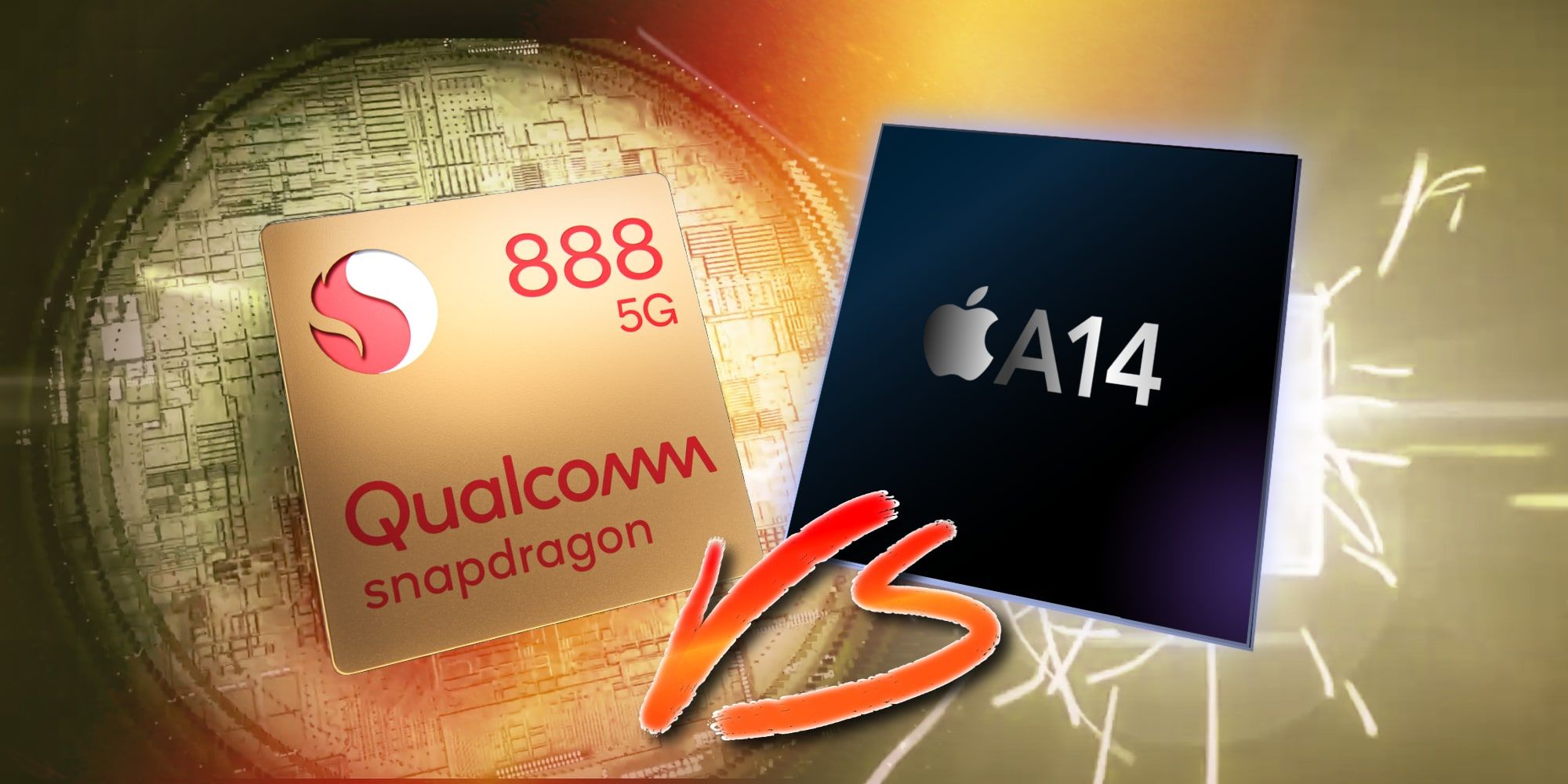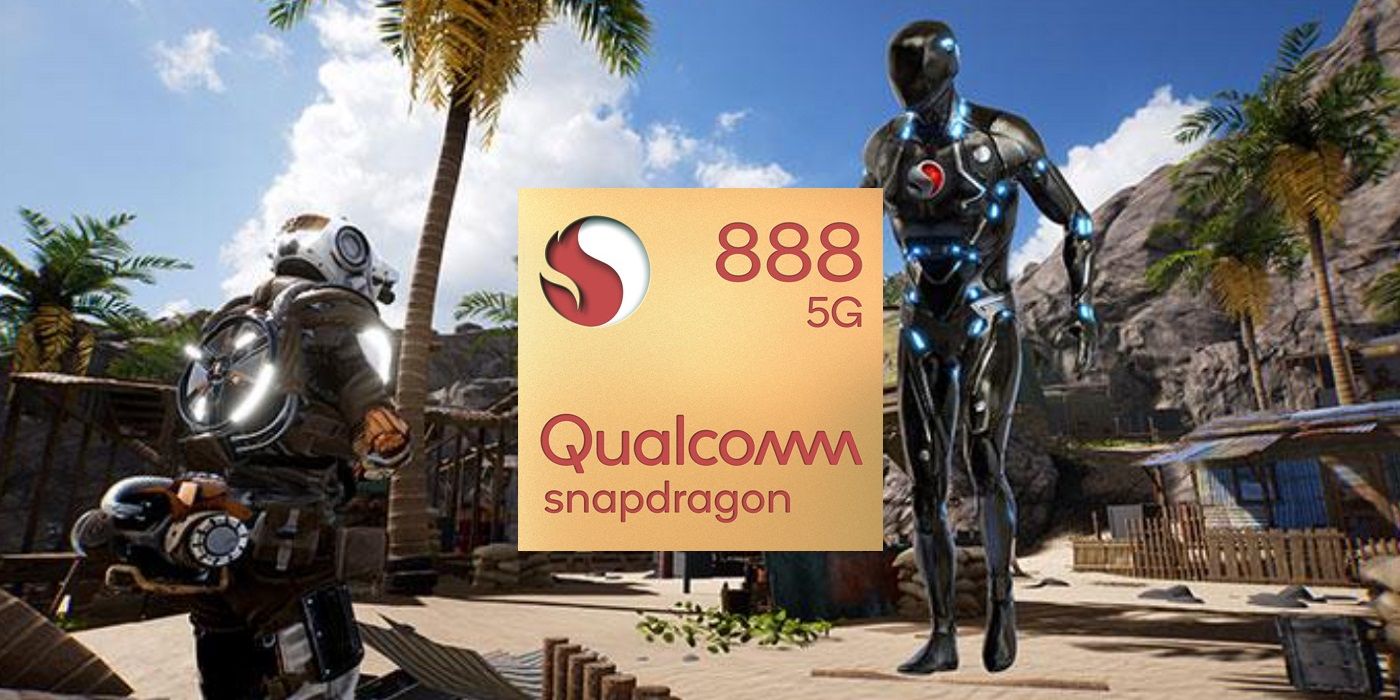Apple's A14 is the system-on-a-chip (SoC) that powers the iPhone 12 and the iPad Air 4, while Qualcomm's Snapdragon 888 is the fast new SoC that's likely to power many Android flagship smartphones in 2021. Qualcomm recently released benchmarks to highlight just how much the latest chip has improved over the previous generation. Unfortunately for the chip-maker, it looks like beating last year's Snapdragon isn’t enough to match Apple’s latest solution.
Qualcomm announced the Snapdragon 888 at its virtual 2020 Tech Summit. 5G took top billing at the event and Qualcomm claims to have the world’s first carrier aggregation of Sub-6, TDD and FDD networks with its X60 modem, meaning the best possible speeds worldwide. Naturally, CPU and GPU performance saw improvements compared to the Snapdragon 865. The biggest performance gain comes from AI processing, reaching an impressive 26 TOPS (tera operations per second), leading to questions on how it would compare to Apple’s latest chip.
Now that Qualcomm has shared some benchmark results, early comparisons can be made. It is worth noting that Qualcomm is using a reference design for its testing and not an actual product that can be purchased, so the performance seen from upcoming phones that include the Snapdragon 888 could vary from what Qualcomm revealed. The CPU is often highlighted with benchmarks and that was covered, but Qualcomm claims the biggest gains are in graphics and artificial intelligence. AnandTech compiled a list of GFXBench graphics scores comparing the 888 to Apple’s A14, as well as the older A13, Snapdragon 865, and Kirin 9000 chips.
The A14 led the pack with 77 frames-per-second (FPS) sustained and 102 peak performance, followed by the A13 with 70 and 91 FPS. The Qualcomm Snapdragon 888 placed third with 86 peak. Huawei’s Kirin 9000 scored 59 and 82. The scores drop to under 60 FPS below this level, meaning the latest generation from Qualcomm and Huawei are significant improvements over the older chips, but still can’t compete with Apple’s A14. AnandTech notes that sustained performance will depend on the amount of power supplied to the chip. Since this is a reference design, these figures could improve significantly in the phones that are coming in 2021, perhaps even high enough to surpass Apple's chip.
More Snapdragon 888 Vs. A14 Benchmark Results
Geekbench is a common CPU benchmark tool and covers such a wide range of hardware, which is what makes it among the most popular test suites. The Qualcomm Snapdragon 888 scored 1,135 single-core, breaking the 1,000 mark for Android devices for the first time. For reference, the same comparison scored the Galaxy S20 Ultra (with Snapdragon 865) at 919 and the Galaxy Note 20 Ultra (with Snapdragon 865+) at 983. In contrast, Apple’s A14 scores 1,603. In fact, the older A13 beats Qualcomm’s best also, coming in at 1,331. Single-core CPU scores are not the only measure of performance, however. Qualcomm said its Snapdragon 888 scored 3,794 for multi-core on average in a Geekbench test, which is a standard gain over older Snapdragon chips and closing in on Apple’s A14 with its score of 4,187 and passing the A13's 3,366. Single-core performance is often what's noticed in day-to-day use while multi-core kicks in when heavier processing is required. In both areas, Apple still wins.
The AI tests shared don’t have sufficient equivalents for iOS, so those scores can’t be compared. However, the Snapdragon 888 UL's Procyon AI Inference benchmark score suggests that it is nearly three times faster than the Snapdragon 865, living up to Qualcomm’s claim of a huge improvement. Based solely on TOPS, the Snapdragon 888 should beat the A14 easily in artificial intelligence benchmarks that rely on raw processing power. Although, AI is more nuanced than that, making it difficult to draw comparisons without extensive testing across several types of tasks. The A14 is currently the overall fastest mobile processor available at the moment but, the question is, will any of this change when Android phones powered by the Snapdragon 888 actually arrive to market?


